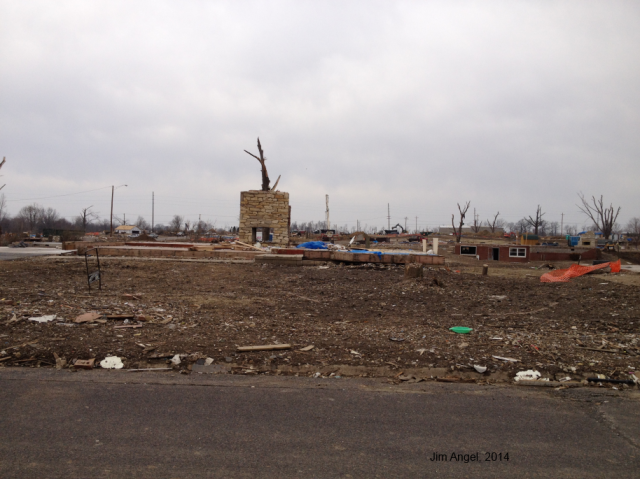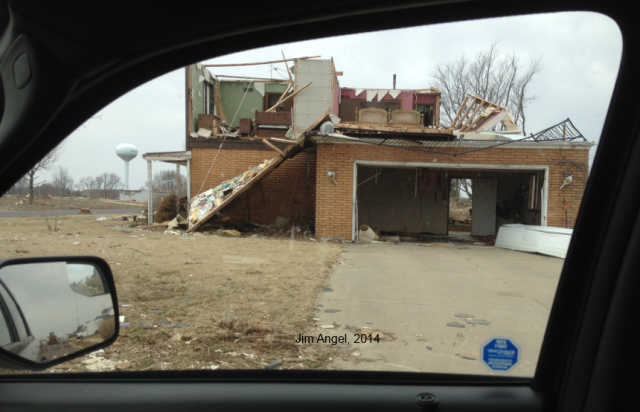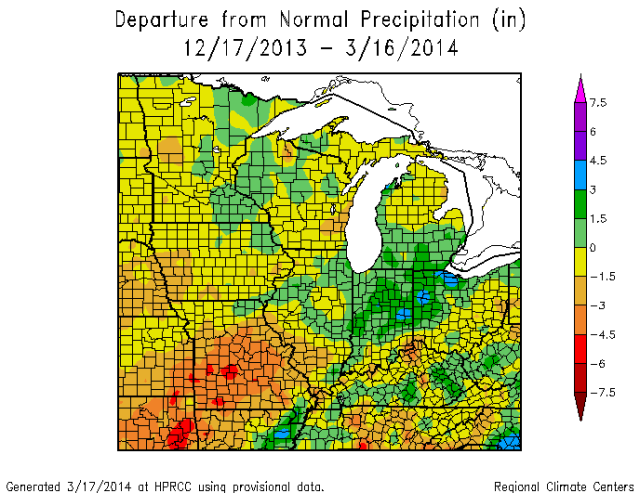
On Friday, I visited Washington IL to check on the recovery from the November 17, 2013, tornado event. The good news is that I saw lots of construction. The bad news is that a lot of damage remains. As a result of the harsh winter, very little clean up could be done in these conditions, let alone extensive construction. In fact, the city is still looking for volunteers to help with the cleanup. Other locations hit by the November 17 tornado outbreak are facing similar conditions.
While tornadoes can occur in any month of the year, our core season in March-June. In many cases, a community has a full construction season to recover from such a disaster. One of the unique aspects of this tornado outbreak is that it happened in mid November, with winter right around the corner. And not just any winter, but one of the harshest winters in a long time. Looking at the weather records for nearby Peoria, the low temperatures after November 17 quickly dropped below freezing with a few light snow events. By December, they had a full-blown winter. By the end of it, Peoria received 49.6 inches of snow, the second highest total behind the 52.5 inches in 2010-11. It was the 8th coldest December-February on record as well. It is no wonder that the cleanup effort has a long ways to go.
However, as they say, “spring brings hope” and on that spring day last Friday I saw signs of hope and recovery for Washington IL. My sympathies go out to all tornado victims as they heal physically, financially, and emotionally from this natural disaster.










